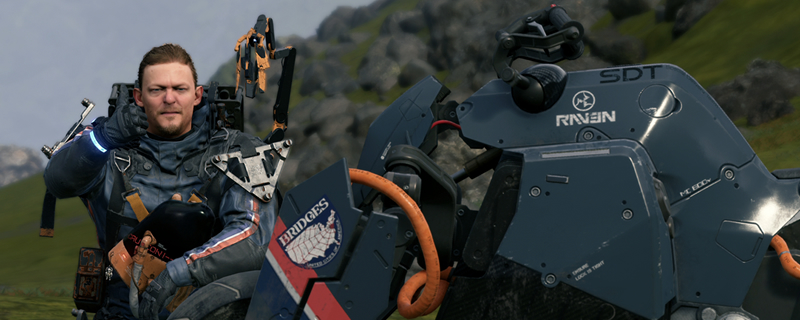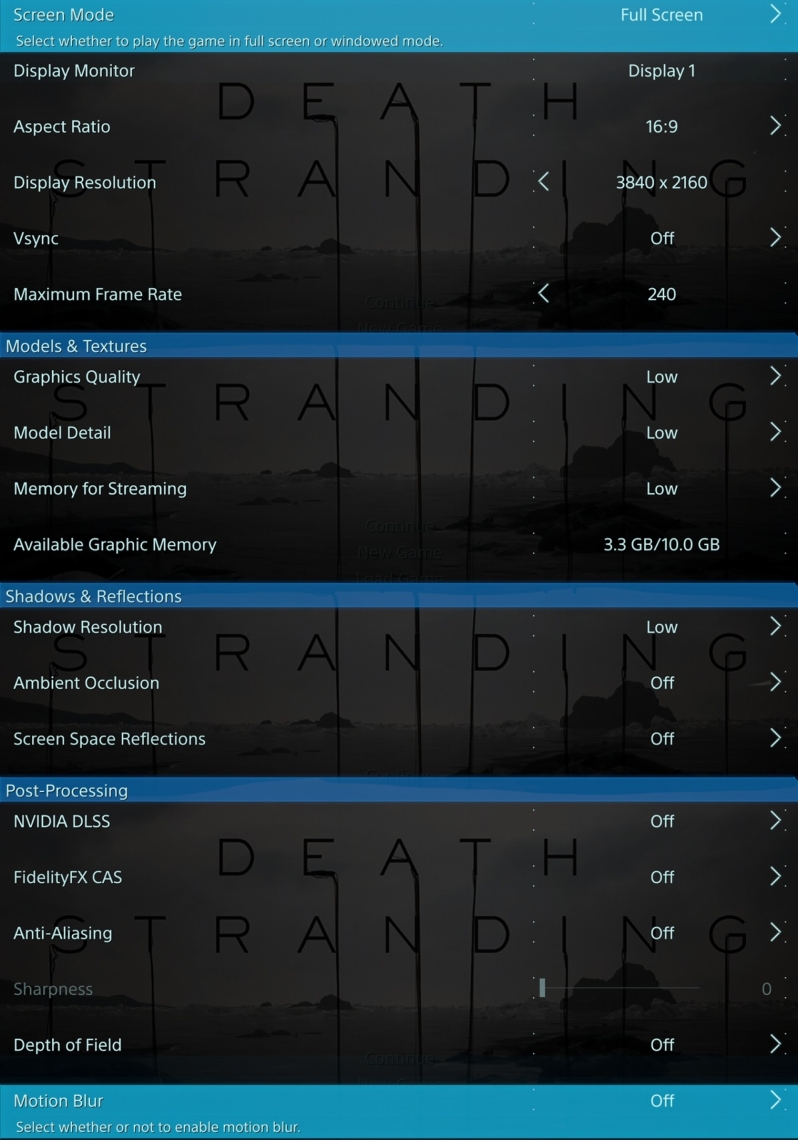Death Stranding PC Performance Review and Optimisation Guide
PC System Requirements & Graphics Options Â
Â
As a former PlayStation exclusive, Death Stranding’s system requirements are based around the restrictions of Sony’s PlayStation 4 system, a console which released in 2013. With this in mind, it is easy to see why Death Stranding has such low system requirements.Â
For 1080p 60FPS performance, Death Stranding requires a CPU with eight threads and graphics cards like AMD’s RX 590 and Nvidia’s GTX 1060. These GPUs are not very high-end by today’s standards, a fact that makes Death Stranding’s PC version very accessible. That’s great news for PC gamers and Kojima productions alike, as this doesn’t limit Death Stranding’s audience.Â
Minimum (720p 30FPS)
OS: Windows 10
CPU: Intel® Core i5-3470 or AMD Ryzen 3 1200
RAM: 8 GB
GPU: GeForce GTX 1050 3 GB or AMD Radeon RX 560 4 GB
DirectX 12
HDD: 80GB
Sound cards: DirectX compatible
Recommended (1080p 30fps)
OS: Windows 10
CPU: Intel Core i5-4460 or AMD Ryzen 5 1400
RAM: 8GB
GPU: GeForce GTX 1050 Ti 4 GB or Radeon RX 570 4 GB
DirectX 12
HDD: 80GB
Sound cards: DirectX compatible
Recommended (1080p 60fps)
OS: Windows 10
CPU: Intel Core i7-3770 or AMD Ryzen 5 1600
RAM: 8GB
GPU: GeForce GTX 1060 6 GB or AMD Radeon RX 590
DirectX 12
HDD: 80GB
Sound cards: DirectX compatible
Graphical Options
Death Stranding was primarily designed for Sony’s PlayStation 4 console, which means that the game wasn’t designed to feature many graphics options. All we have is the ability to define shadow resolution, lower model draw distances (Model Detail), change texture LODs and outright disable options like Depth of Field, SSAO and Motion Blur.Â
While Death Stranding’s graphical options are simplistic, its main flaw is that it only has a limited impact on game performance. As we will discuss later, we would have loved to have seen Kojima Productions invest in more resolution scaling options. Proper resolution scaling options would give PC gamers the versatility that they need the achieve stable performance on some systems, especially those that are at the edge of 60 FPS performance.Â
Resolution-wise, the game also appears to be restricted to set resolutions, such as 1080p, 1440p, 4K and their ultra-wide equivalents. You cannot create custom resolutions like 1944p (a 90% scaling of 4K) or 1728p (an 80% scaling of 4K). While it is great that we have DLSS and AMD’s FidelityFX CAS (Contrast Adaptive Sharpening), more versatile options would be a welcome addition.Â




